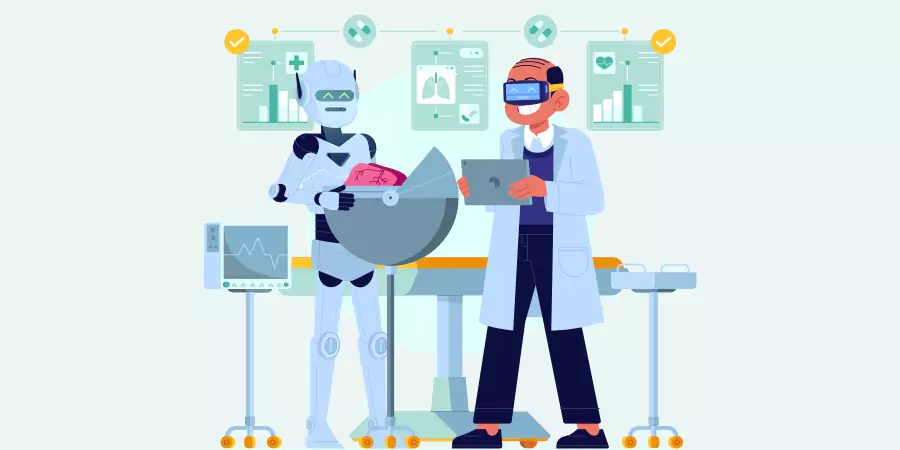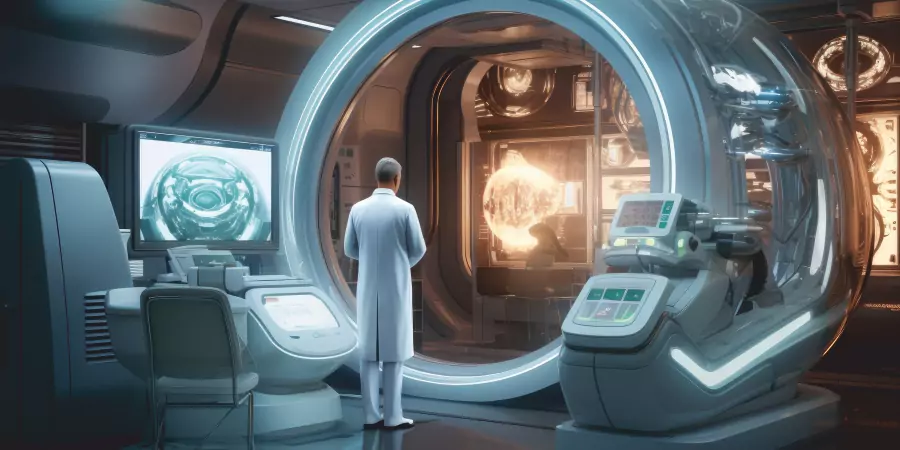The Next Frontier in Patient-Centered, Preventive Healthcare
Healthcare 5.0 marks a transformative shift in the medical field, where advanced technologies merge with a deeply personalized and preventive approach to care. Building upon the foundation laid by Healthcare 4.0, this new era integrates artificial intelligence (AI), the Internet of Things (IoT), robotics, big data, virtual reality (VR), and predictive analytics to revolutionize how healthcare is delivered, experienced, and sustained.
Evolution from Healthcare 4.0
Healthcare 4.0 introduced digital solutions such as telemedicine, electronic health records, and remote diagnostics — significantly enhancing operational efficiency. However, its primary focus remained on treatment rather than prevention and personalization.
Healthcare 5.0 shifts that focus. It not only leverages digital tools but also uses them to anticipate patient needs, detect health risks early, and provide highly individualized care. This evolution marks a move from reactive treatment models to proactive health management.
Role of AI in Healthcare 5.0
Artificial Intelligence is a cornerstone of Healthcare 5.0. It plays a vital role in:
- Early disease detection through deep learning models
- Analyzing complex medical data for accurate diagnoses
- Personalizing treatment plans based on genetic and lifestyle factors
- Automating administrative workflows for improved efficiency
AI enables clinicians to make faster, data-driven decisions, thereby improving patient outcomes and streamlining healthcare delivery.
IoT and Real-Time Health Monitoring
The Internet of Things (IoT) connects medical devices, wearables, and sensors to a centralized system that continuously gathers patient data. These connected devices:
- Track vital signs like heart rate, oxygen levels, and blood pressure
- Monitor chronic diseases in real time
- Send alerts in case of abnormalities or emergencies
- Encourage patients to take an active role in their health
This constant flow of health information allows for real-time intervention, reducing hospital admissions and enhancing patient safety.
Big Data and Predictive Analytics
In Healthcare 5.0, big data is more than just a buzzword — it’s a foundation for precision medicine. By analyzing large volumes of medical records, genetic data, and population health trends, predictive analytics can:
- Identify patients at risk of developing chronic conditions
- Forecast potential health crises such as flu outbreaks
- Tailor prevention strategies for individuals and communities
- Improve decision-making at both clinical and administrative levels
Healthcare systems equipped with predictive tools are better prepared, more efficient, and capable of delivering better care at lower costs.
Robotics and Automation
Robotics is reshaping healthcare delivery in unprecedented ways. From surgical assistance to elder care, robotic systems in Healthcare 5.0 offer:
- Higher precision in minimally invasive procedures
- Reduced recovery times and complications
- Automation of routine hospital tasks like medication dispensing
- Support in rehabilitation and physical therapy
Robotic technologies also help address workforce shortages and enable consistent, high-quality care.
Virtual Reality in Modern Medicine
Virtual Reality (VR) is no longer confined to gaming — it has found powerful applications in healthcare. VR in Healthcare 5.0 is used for:
- Medical training and surgical simulation
- Pain distraction therapy during treatments
- Mental health interventions like PTSD treatment
- Educating patients about procedures and anatomy
VR enhances both the learning curve for healthcare professionals and the comfort level of patients undergoing treatments.
Patient-Centered and Preventive Approach
The most defining feature of Healthcare 5.0 is its shift toward patient-centered and preventive care. This model empowers patients to actively manage their health through digital tools, personalized insights, and continuous monitoring. Instead of waiting for illness to strike, care is designed to:
- Prevent diseases through early detection and lifestyle recommendations
- Engage patients in decision-making
- Reduce healthcare costs through better outcomes
- Deliver care that respects individual preferences, values, and needs
This approach transforms healthcare from a service to a partnership between patients and providers.
Conclusion
Healthcare 5.0 is not just a technological upgrade—it’s a comprehensive rethinking of how health services are designed, delivered, and experienced. With its focus on personalization, prevention, and precision, it places the patient at the center of an intelligent, responsive, and connected ecosystem. As technologies continue to evolve, Healthcare 5.0 will define the standard of care for a smarter, healthier future.





